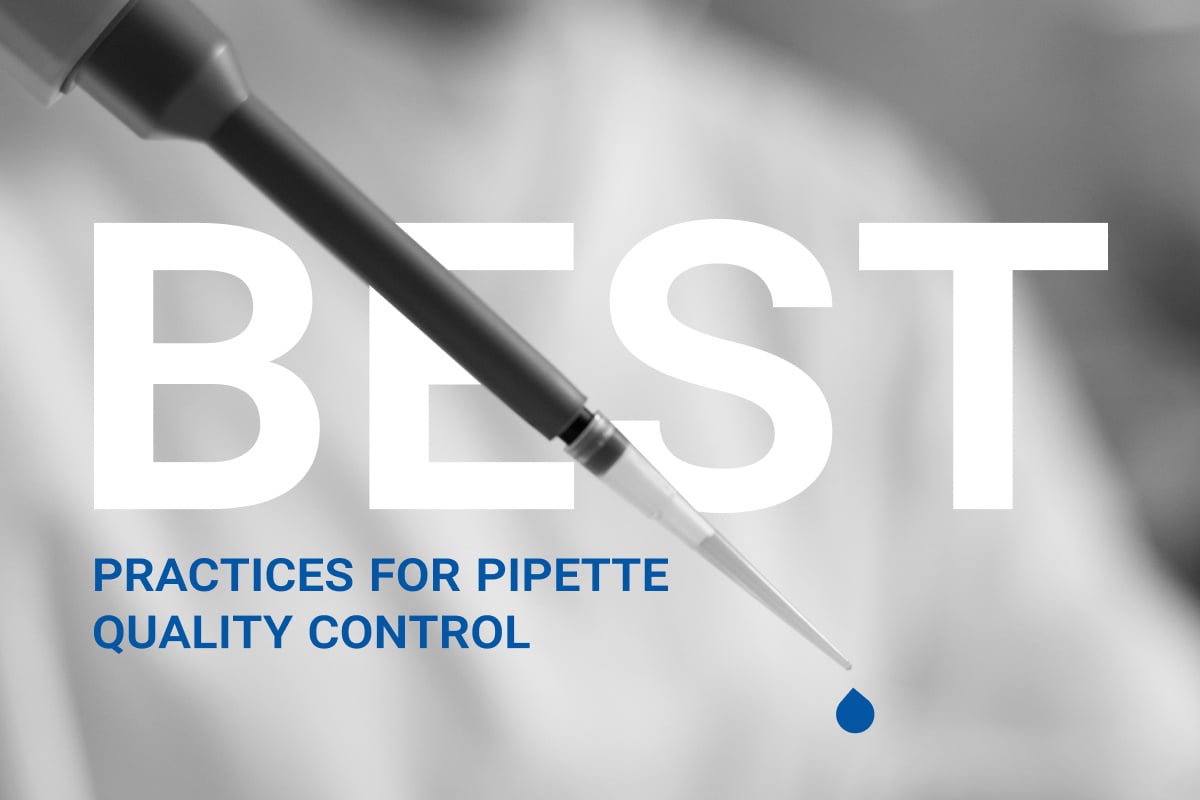Why Pipette Calibration Matters for Accuracy
Maintaining accurate, reliable results in any laboratory begins with effective pipette quality control. From routine pipette calibration to preventive maintenance schedules, ensuring that your lab equipment meets ISO 17025 compliance standards is essential for achieving precise volume measurements and avoiding costly pipetting errors. In this guide, we’ll cover best practices for lab pipette procedures, including how to reduce user variability, extend equipment lifespan, and select the right calibration service provider.
Despite its simplicity, a pipette classifies as a “precision instrument” and requires proper maintenance, calibration and handling for accurate results.
Routine Maintenance & Calibration Tips
While there are many practices that can be implemented, calibration is the most routine check-up. Even the most well-designed pipettes can experience wear and tear over time.
- A pipette may appear sturdy, but its internal components (such as seals, pistons and springs) can degrade and corrode if a pipet is stored in a horizontal position while holding liquids.
- Operator technique is also a major influence as simple mistakes – improper tip immersion depth or inconsistent plunger pressure – can lead to significant errors.
- Routine maintenance ensures your instrument continues to aspirate correct volumes and should be typically performed every 3 to 6 months. This will also prevent “silent failures” - issues that are not immediately visible such as a leaking internal seal.
Pipette accuracy may be as much important as as proper technique, since even the most precise instrument can yield unreliable results if used incorrectly.
The other key to effective pipette quality control is setting a calibration frequency that ensures high reliability. But how to do that?
Choosing the Right Calibration Schedule
How do we determine calibration frequency?
To set a calibration frequency, we have to rely on a parameter known as "Mean Time Before Failure" or MTBF, which is the average time it takes for pipettes to "fail". A failure is registered when a pipette's performance falls outside laboratory's set conditions or tolerances, and MTBF is calculated as the average of all times a pipette has failed within its test group.
Once known, MTBF helps predict how long a pipette will remain accurate and precise. It helps determine the best calibration frequency along with factors like reliability, quality control, and regulations. It can vary for individual pipettes based on different factors, such as those shown in the image below:
.jpg?width=1200&height=460&name=Factors%20of%20mean%20time%20before%20failure%20(Mtbf).jpg)
We mentioned other important factors in setting up calibration frequency such as target reliability. It is based off the laboratory's quality standards, and is given as a percentage - for example, a 95% reliability means that 95% of pipettes are working correctly while the remaining 5% are giving inaccurate results.
When setting target reliability compliance with regulatory guidelines is important, and factors to consider include the precision of tests, the effect of faulty pipettes on patient outcomes, legal concerns and production decisions.
Once you known your target reliability and MTBF, you can determine calibration frequency using the image below:

The accuracy and precision of pipette delivery directly affects laboratory results. That is why quality control measures for pipettes should be aligned with those used for other precision instruments. Since pipettes can fail unexpectedly and have a higher failure rate than most other laboratory equipment, the key to effective pipette quality control is setting up a calibration frequency that ensures a high reliability rating.
This is why Pipette.com offers its own accredited calibration and repair services that are not limited by brand. With a single quality system and different plans to suit your science, we can keep your pipette program controlled and compliant.
Pipettes may be small, but their impact is still immense. By prioritizing routine pipette calibration and maintenance, your laboratory can ensure precise and reliable liquid handling.
After all in science, “every drop counts”.
Frequently Asked Questions (FAQ)
Why is pipette calibration critical for lab accuracy?
Even though pipettes are simple tools, they are precision instruments—internal parts like seals, pistons, and springs can degrade over time or through improper handling, leading to silent failures that compromise results. Regular maintenance and calibration ensure ongoing accuracy and reproducibility.
How often should I calibrate my pipettes?
Standard guidance recommends every 3 to 6 months. However, calibration frequency should be tailored using the pipette’s Mean Time Before Failure (MTBF) and your lab’s target reliability level to minimize downtime and errors.
What is MTBF, and how does it influence calibration schedules?
MTBF (Mean Time Before Failure) measures average time until a pipette fails its performance criteria. When combined with your lab's target reliability (e.g., 95%), MTBF helps determine optimal calibration intervals for maintaining consistency.
Should I do in-lab checks between calibrations?
Yes. In‑lab or benchtop performance checks help catch random or silent malfunctions quickly. These checks, especially before or after critical procedures, help ensure pipettes remain accurate and provide a real-time safety net.
What makes a robust pipette QC program?
A well-rounded QC program combines: regular professional calibration and maintenance (external service), in‑lab performance checks based on routine or event triggers (e.g., post-autoclaving or drops), operator training and documentation following ISO‑level protocols.
What lab-specific factors affect calibration frequency?
Elements such as: usage frequency (daily vs. occasional), handling and storage conditions, sample types (volatile, viscous), technique consistency, regulatory requirements, these guide how frequently pipettes should be verified or recalibrated.
What value does onsite or accredited calibration bring?
Professional calibration ensures accuracy traceable to ISO 17025 standards, enabling compliance with GLP/GMP and reinforcing reliability. Outsourced calibration services, especially for multi-brand fleets, streamline maintenance programs and elevate quality assurance.


